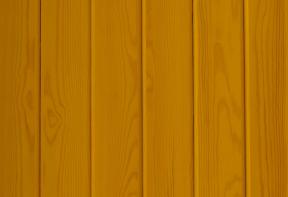Retrofit your deck with composite
Use finish-free materials to escape the maintenance monster
I’m a little embarrassed to admit this publicly, but here it goes: I’m abandoning wood in exchange for a modern upstart. When I built the 800-sq.-ft. wraparound veranda on my house a dozen years ago, I used 2×6 eastern white cedar for the decking. The finish lasted better than most: three years in sunny spots and more than five seasons in the shade on the north side. But then the inevitable set in–a little peeling here, some grey wood peeking through over there and even some scratches. I’m definitely not into a barnboard deck, so refinishing was a must.
I stripped the deck, refinished the wood and restored that great look. This happened a couple of times, in fact. Trouble was, the ongoing refinishing process took more effort and money than I expected. A lot more. Which brings me to my confession: I pulled up all that perfectly good cedar from the good-as-new superstructure, gave the cedar away to a good cause, then replaced it all with composite. I may be embarrassed, but I’m also relieved.
Composites are a 50/50 blend of reclaimed wood fibres and recycled plastics. They offer finish-free deck performance, with nothing more required than an occasional wash. Although I did consider composites in the mid-1990s, when I built my veranda, the expense and appearance scared me away. But when you consider that the price you pay for composites gets you out of all the requisite finishing and refinishing, then the economics are more reasonable. Add to that the fact that better-looking composites are coming out all the time, and the deal becomes more compelling–even to a traditional wood guy like me.
Floor transplant
Before you decide if a deck-board transplant is for you, take a hard look at the condition of the joists, beams and posts you currently have. I was pleased to see that the design features I’d incorporated to speed up water drainage and drying of the joists, beams and posts had worked perfectly. Except for spiderwebs and old leaves, the underlying superstructure of my deck is as good today as when it went up in 1995. Not a speck of rot anywhere.
I like everything about the 2×6 cedar decking except the maintenance. That’s why I chose a solid composite to mimic the thickness of cedar. Hollow, extruded composites are lighter in weight and less expensive than solids, but they don’t look as nice in my book because you can’t rout edges and ends. I opted to use Trex solid composite because I’ve used it before with good results. The plastic comes mostly from recycled grocery-store bags, and the wood fibres come from ground-up hardwood shipping pallets and furniture-factory scraps.
Jump to a section
- Page 1 : Transition to composite wood
- Page 2 : Replacing the boards
- Page 3 : The little details
To leave a comment, please log in












No comments